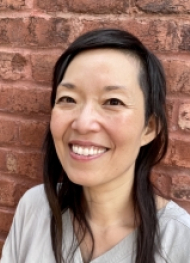Student Wellness Hub
Indian Ocean World Centre presents Coral in the Anthropocene: Visual Archives & Nuclear Ecologies in the Pacific

Ecologies of waste and the histories of coral reef science in the
Pacific are intimately connected insofar as they are mediated
by Japanese and U.S. empires. In the 1930s, Japanese marine
biologists began studying the living habitats of coral reefs at
the Palao Tropical Biological Station in the island of Koror in
today’s Republic of Palau, while the island was occupied and
governed by the Japanese empire. Their research on the symbiotic relationship between
coral polyps and algae laid one of the foundations for the American science of nuclear
ecology that developed out of the study of the irradiated atolls of the Marshall Islands, which
the United States infamously used as a site of nuclear weapons testing in the 1950s.
Focusing on the technology of radioautography that American scientists used to visualize
radiation, I connect this transpacific history of nuclear waste to the earlier colonial roots of
coral reef science. In doing so, I explore the vexed question of the non-human “labor” of
corals who involuntarily participated in the scientific observation and visualization of
radiation. I situate this analysis of the involuntary labor of irradiated corals within the longer
colonial history of extracting another type of waste, guano or excrement of seabirds, used as
natural fertilizer. The involuntary labor of corals, I argue, needs to be analyzed alongside the
involuntary labor of Pacific Island guano miners, whose freedom was curtailed by the colonial
regimes of racialization and the extraction of mineral resources.
